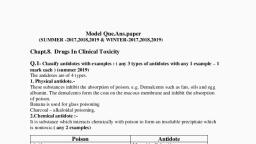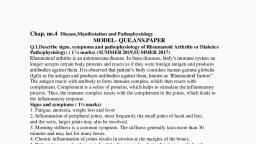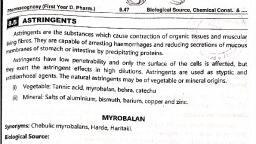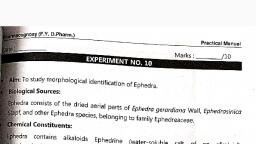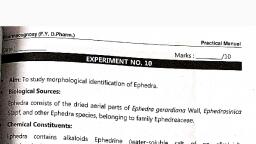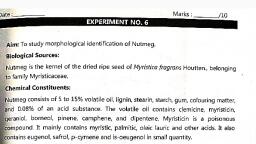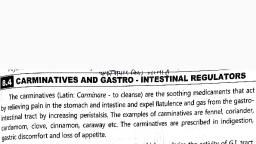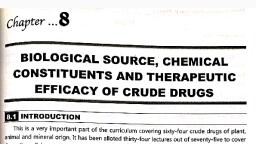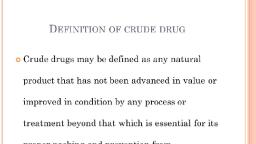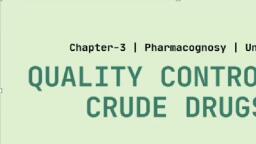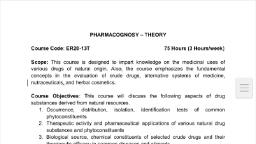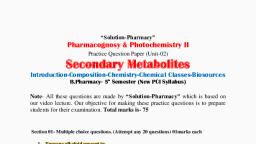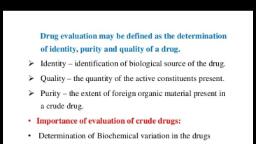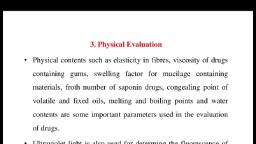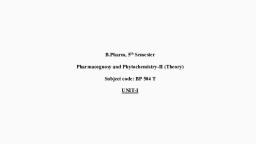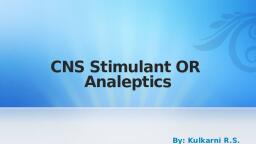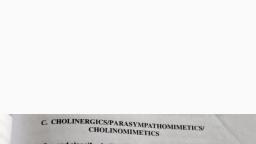Page 1 :
chapter, , , , , , , , Classification of Crude Drugs from, Natural Origin, , , , <==, , , , 2.1 Introduction, , , , Asked in Exam : S-09, S-10, W-10, eat], __ The crude drugs obtained from different natural sources are used to treat various, diseases, It is very essential to arrange them in a systematic and scientific manner, which will, help us to study them adequately., The crude drugs of natural origin can be divided into two main types :, (@) Organized drugs (b) Unorganized drug, Both the organized and unorganized drug can be differentiated as follow:, , , , , , Organized drug (cellulose) Unorganized drug (acellulose), , , , Organi : ., , ia crude drugs are organs of Unorganized crude drug are derived from, , i a or animals, e.g. root, leaves, | parts of plant or animal, e.g. extract, resins,, ers juices, gums, , , , 0: :, Tganized drugs are made up of cells | Unorganized drugs do not have particular, , , , , , and parti 5 :, Particular tissue system tissue system
Page 2 :
e Pharmacognosy 2-2 Classification of Crude Drug from Natural Orig,, , , , z a, na Organized drug (cellulose) Unorganized drug (aceliulose), 0., , , , , , They are mostly solid in nature, , Ww, , They may be solid, semisolid or Tigi in|, nature |, , , , , , Organized drugs can be described by | Unorganized drugs can be described by, , 4 | morphological and microscopical | physical and chemical tests |, characters |, , , , 5 E.g. Digitalis leaf, Cinchona bark and, , E.g. Aloe, Opium latex, Castor oil, | fennel fruit, , , , , , , , , , 2.2 Classification of Crude Drug, , Drugs can be classified depending on the source or origin as follows :, (1) Vegetable source- e.g. Digitalis, vinca, (2) Animal source- e.g. Gelatin, shellac, , (3) | Mineral source- e.g. Shilajit, prepared chalk, , eee eatin e DED or ES |, , (4) Marine source- e.g. Agar, cod liver oil, , (5) Microbial source- e.g. Vaccines like polio, tetanus, , pear, , For Pharmacognostic study, Crude Drugs can be Classified as follows :, e Alphabetical Classification, © Morphological Classification, e Taxonomical Classification |, e Chemical Classification |, e Pharmacological Classification ; |, , Chemotaxonomical Classification, , , , 2.2.1 Alphabetical Siaeiiiéaiisn, , ESS ee, ., , drugs are considered for the purpos’, , like Indian Py ‘harmacopoe st, cia’ (1.P.), Britis, s Pharmacopoeia (U.S.P.) me on, , E.g. A— Aloe (unorganized drug),, , In this type of classification, English names of the, It is adopted in pharmacopoeial books, Pharmacopoeia (B.P.) and United States, , B - Belladonna (leay., C — Cinchona (bark), (leaves), , D- — ileal, , E — Ergot (Sclerotium),
Page 3 :
ET Pharmacognosy 2-3. Classification of Crude Drug from Natura! Origin, , , , 2.2.2 Morphological Classification, , Morphological system is the oldest method of classification. Here the parts of the plants, , like root, stem, leaves, fruit, bark and flowers are considered for classification of the drug., , . Rhizome drug- e.g. Ginger, , . Root dnug- c.g. Liquorice, , ° Stem drug- ¢.g. Ephedra, , e Leaf drug- c.g. Digitalis, , . Fruit drug- c.g. Fennel, , . Flower dmug- e.g. Clove, , . Bark drug- e.g. Cinnamon, , . Wood- e.g. Sandalwood, , . Gums- e.g. Acacia guar gum, This type of classification is more convenient for practical purposes and useful to, , identify adulterants. Disadvantages of this type of classification 1s, (i) — Chemical nature of the drug is not known, , (ii) Pharmacological behaviour of crude drug is not known, , (iii) Drugs of animal and mincral origin are difficult to classify by this method, , (iv) The unorganized drugs can also be classified directly under the morphological part used, for the preparation of the product, c.g. aloe can be classified under leaves; jute can be, categorised under stem., , 2.2.3 Taxonomical Classification Asked in Exam: S-09, , Taxonomical system of classification is botanical system of classification, Various, characteristics of the plant are used for classification of that particular plant into division,, class, order, family, genus and species. Taxonomical classification 1s based on the principles of |, natural relationship and evolutionary development., , Advantage of this type of classification is that plants having common morphological, features are classified under same families and having distinguishing charactenstics, can be, studied at one tme: but the disadvantage of this classification is one cannot recognize the |, nature of crude drug. This system fails to take into an account the chemical nature of active |, constituents and the therapeutic significance of crude drugs. Examples of Taxonomical, , classification of few drugs are as follows :, , , , fe gee
Page 5 :
[FP Pharmacognosy, , b. = Alkaloids :, , 2-5 Classification of Crude Drug from Natural Origin, , (i) Tropane alkaloids- c.g. Datura, belladonna, (ii) Indole alkaloid- e.g. Vinca, rauwolfia, , (iii) Quinoline alkaloid- e.g. Cinchona, , (iv) TIsoquinoline alkaloid- e.g. Opium, , (v) _ Imidazole alkaloid- e.g. Pilocarpus sp., , (vi) Steroidal alkaloid- e.g. Kurchi, , The other examples include carbohydrate, lipids, tannins, resins and volatile oils., , 2.2.5 Pharmacological Classification, , In this type of classification, the crude drugs are arranged depending upon the, pharmacological activities shown by the active constituents present in the drug. But this type, , of classification is not suitable in cases where one crude drug shows diverse type of, pharmacological activities., , The examples of pharmacological classification is discussed as follows :, a. Drugs acting on Gastrointestinal tract, (i) Carminative- e.g. Dill, anise, (ii) _ Bitter stomachics- e.g. Kalmegh, (ii) Antiamoebics- e.g. Kurchi, (iv) Purgatives- e.g. Senna, (v) Emetics- e.g. Ipecac, b. Drugs acting on Respiratory System :, (i) Bronchodilators- e.g. Ephedra, (ii) Expectorants- e.g. Liquorice, (iii) Antitussive- e.g. Codeine |, c Drugs acting on Cardiovascular system k, (i) Cardiotonic- e.g. Digitals, (ii) Antihypertensives- e.g Rauwolfia, (iii) +Vasoconstrictors- c.g. ephedra, d. ‘Drugs acting on Central Nervous system :, , (i) CNS stimulants- e.g. Caffeine, (ii) CNS depressants- e.g. Atropine


